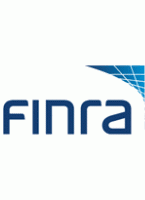The create-your-own-plan-with-all-the-best-benefits Plan!
Not Your Parent’s 401(k) Plan
I like to imagine a Frankenstein-like setting with a mad scientist perched over a copy of the Internal Revenue Code’s Section 401(k) when I think back to 1978 when Ted Benna helped bring the 401(k) plan to life. If you didn’t know it, the birth of the 401(k) plan was not an act of Congress but actually started from an aggressive interpretation of tax law by consultant Ted Benna. What started as a page and a half of legalese has grown to over $7.3 trillion worth of retirement savings.¹
The paragraph 401(k) went into effect in 1981 with neither fanfare nor any parades. Ted Benna’s consulting firm had the first 401(k) savings plan in the whole country, and his company administered fifty of them by the end of 1982 (there are now more than 600,000!). The evolution of the 401(k) plan as a retirement savings vehicle is especially important to folks who are self-employed or have a small business because there are features today that weren’t available back when the plans started.
- Prior to 1980s, pension plans were the primary retirement vehicle for employees
- The first 401(k) savings plan pitched by Ted Benna was rejected by the company’s attorney because it was untested
Today’s plans have expanded because it’s more than just Ted Benna reading the tax code and designing plans out there. There is no doubt today over the legality of these plans, and they have proliferated. There are highly customizable plans that add after-tax & designated Roth accounts and offer in-plan conversions as part of the “Mega Backdoor Roth” strategy for sole proprietors, and there are more straightforward safe harbor plans that are popular with small employers because they simplify administration. Knowing what to ask and how to design a plan to meet your company’s needs is pretty close to “rocket surgery” for most folks. Working with an investment professional like Cardinal Retirement Planning, Inc., can help you navigate the maze.
Build from the Basics
Every 401(k) plan we’ve run into in the wild has offered at least three types of investments: a stock fund, a bond fund, and a money market fund. On average there are typically eight to twelve investment options including international equities & bond funds, all-in-one asset allocation funds, and target date retirement funds.
This menu of investments is offered inside of the plan, and the participant chooses from the set of options. It is up to the plan sponsor to pick the funds, and they have a fiduciary duty to pick appropriate funds. Picking large, professionally-managed, low-cost funds is in the best interest of all the participants and helps keep more dollars in their pockets. If you are the business owner, you may be both the sponsor and the participant.
- Unlike pension plans, 401(k) plans are typically participant-directed
- In participant-directed plans, each investor can make their own investment fund selections
In addition to fund selection, each participant needs to choose how their contributions are made. The IRS allows for pre-tax, after-tax, and designated Roth contributions to 401(k) savings plans, but the plan does not have to allow all the options. Plans that allow more features can require additional recordkeeping and administration costs, but these can be worth the trouble if your goal is to supercharge your employees’ savings or expand your investment selections past the basic options.
Every plan we’ve seen offers traditional pre-tax 401(k) savings accounts, and most plans today offer designated Roth accounts as well. Pre-tax savings allow employees to defer money from their paycheck into the investments they selected and pay income taxes on the amount only when withdrawn; Roth deferrals have taxes paid in the present and withdrawals down the road are tax free. Note that any employer matching amounts will be put in the pre-tax account only.
- Choosing between pre-tax and Roth? Technically, there is no difference…
- The difference appears if your future tax rate is actually higher or lower than today…
- So without a crystal ball, diversify across pre-tax and Roth deferrals, or consult a financial planner with tax expertise
Advanced Features and Benefits
If you are ready to get past the basics and make full use of your 401(k) savings plan, take out your Summary Plan Description (“SPD”) and look for any information on in-plan Roth conversions or self-directed brokerage windows. These are two of the most important features for opening up your tax planning and investment selection.
An in-plan Roth conversion allows you to convert part of your pre-tax 401(k) savings into Roth savings. Because the conversion occurs inside the plan, there is no need to roll over funds to a Roth IRA, and there is no concern about triggering pro rata rules that can apply when converting traditional pre-tax IRAs. Simply put, in-plan Roth conversions minimize the paperwork involved with managing your retirement savings.
Self-directed brokerage windows allow participants in 401(k) plans to start blurring the lines between the preset menu of investment funds picked by the sponsor and IRAs that can invest in almost anything. When a participant elects to use their self-directed brokerage window, they are able to purchase more than what the sponsor has pre-approved. There are still limitations; you won’t find cryptocurrency, but you can invest in ETFs and mutual funds that are more speculative or ones that hold precious metals (like gold, silver, and palladium). Without a doubt, there are more potential risks with using a self-directed brokerage window, but they can be part of a well-functioning financial plan if used carefully.
In-plan Roth conversions and self-directed brokerage windows never crossed the mind of Ted Benna back in the late 1970s, but they are some of the newer features plans can offer. Other features include auto-enrollment for eligible employees, auto-escalation to increase contribution rates as salaries grow over time, and most recently the SECURE Act has introduced annuities as an investment option that sponsors can select.
You don’t need to be Mr. Monopoly to start your own 401(k) savings plan. If you have your own full-time business, operate a small business, or have a side-hustle that is profitable, a 401(k) plan designed to support your financial plan can be worth every penny of administration cost. There are more tax-planning opportunities and even higher contribution limits for 401(k) plans compared to SEP-IRAs.
In this day and age of connectivity, why is your financial plan disconnected from your retirement plan? Work with Cardinal Retirement Planning, Inc., to integrate your company’s retirement plan’s features and benefits to help you retire sooner and with greater tax diversification.
Doug “Buddy” Amis, CFP®
1. Information about the history of the creation of the 401(k) and Ted Benna was confirmed and summarized using http://benna401k.com/401k-history.html and
https://www.fool.com/investing/2021/12/11/meet-ted-benna-father-of-the-401k/





